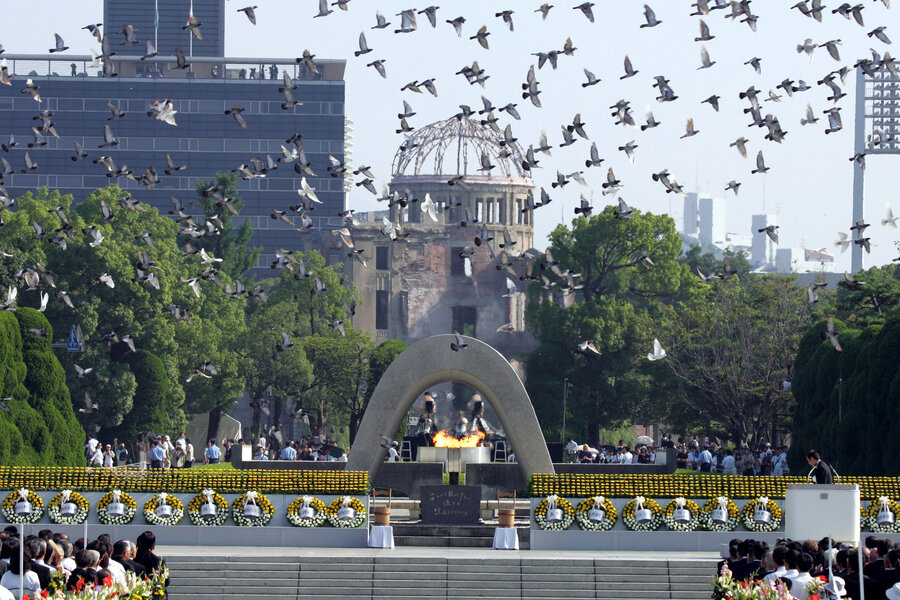Obama plans first presidential visit to Hiroshima: Why now?
Loading...
Later this month, President Obama is scheduled to visit Hiroshima, Japan, making him the first sitting US president to visit the city since the United States dropped an atomic bomb on the area in 1945.
Mr. Obama will visit the site along with Japanese Prime Minister Shinzo Abe on May 27 as part of a broader campaign for nuclear disarmament. The trip will “highlight his continued commitment to pursuing the peace and security of a world without nuclear weapons," the White House said in a statement on Tuesday.
Why now? A previous visit by Secretary of State John Kerry last month offered some foreshadowing for a potential visit, but news of a confirmed trip also arrives as Obama has focused on developing better relations with Asian nations. The president is not expected to issue an apology for the use of atomic weapons in World War II.
The US dropped the atomic bomb “Little Boy” on Hiroshima on Aug. 6, 1945. A second atomic bomb was dropped on Nagasaki on Aug. 9. Japan announced surrender just six days later on Aug. 15, though the official signing did not occur until Sept. 2.
The US bombing at Hiroshima resulted in the deaths of an estimated 140,000 Japanese and razed the city. At the time, a Gallup poll indicated that 85 percent of Americans agreed with the decision to drop the bomb, a choice seen as hastening the end of the bloody conflict.
But more recent polls have shown shifting attitudes – a 2015 Pew research poll showed only 56 percent saying they still agreed with the decision.
“There’s declining support for the idea that it was justified, [especially] among young people,” Bruce Stokes, director of global economic attitudes at Pew Research Center, told the Monitor in a phone interview. “There’s a better understanding now of the horror of it all.”
Secretary Kerry visited Hiroshima in April, becoming the first US secretary of State to view the site. No public speech was made, but Kerry did call the tours and museums “gut-wrenching” and said it is a trip everyone should make to be reminded of the horrors of nuclear weapons.
When asked if that statement included Obama, Kerry clarified:
"Everyone means everyone. So I hope one day the president of the United States will be among the everyone who is able to come here. Whether or not he can come as president, I don’t know.”
In the past, sitting presidents have avoided the site for political reasons and concerns over a request for an apology. Both Japanese and US officials were careful to sidestep any concerns over an apology during Kerry’s visit. The same is expected when Obama visits.
"He will not revisit the decision to use the atomic bomb at the end of World War II. Instead, he will offer a forward-looking vision focused on our shared future," Deputy National Security Adviser Ben Rhodes wrote.
The visit will occur during a state trip to Japan during May 20-28 to attend a Group of Seven economic summit. The president will also visit Vietnam.
This report includes material from The Associated Press and Reuters.
[Editor's note: This report has been updated to clarify that Japan announced a surrender on Aug. 15 but did not sign the official surrender until Sept. 2.]








